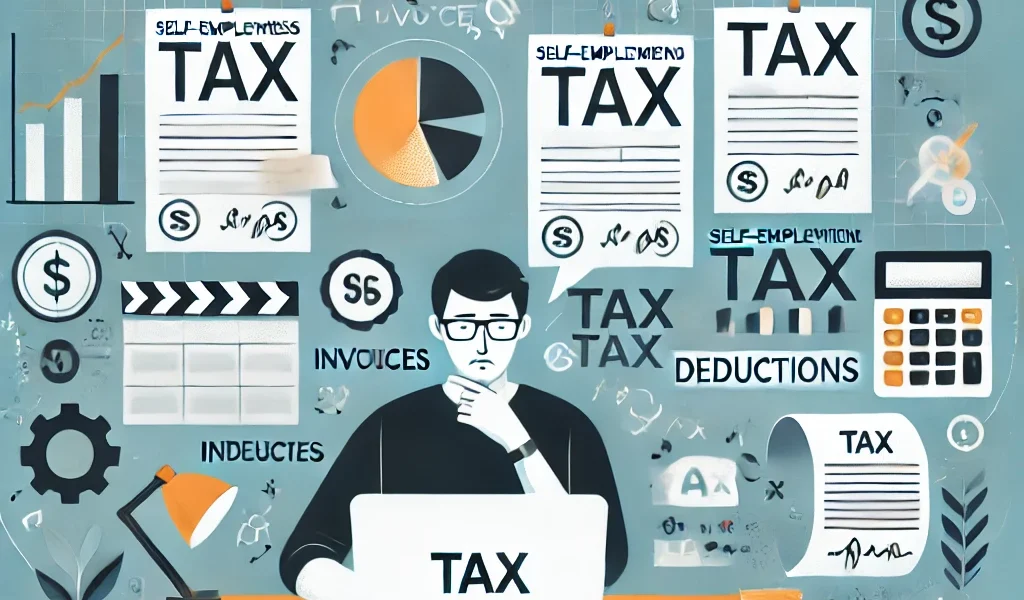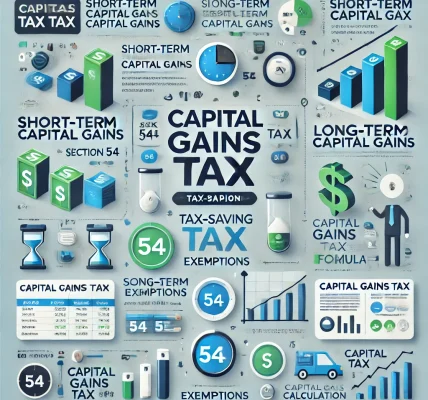Introduction
Freelancing offers flexibility, independence, and unlimited earning potential, but it also comes with tax obligations that differ from traditional employment. Unlike salaried employees, freelancers are responsible for their own tax filings, deductions, and compliance. This guide provides a comprehensive DIY approach to understanding the tax implications of freelancing income while ensuring full legal compliance.
What is Freelancing Income?
Freelancing income refers to earnings received from self-employment rather than a salaried position. This can include:
- Payments from clients for services rendered
- Royalties, commissions, or project-based payments
- Income from platforms like Upwork, Fiverr, and Freelancer.com
- Consulting fees and independent contractor work
Since freelancing income is considered self-employment income, different tax rules apply, requiring careful financial management and planning.
Key Tax Implications of Freelancing Income
1. Self-Employment Tax
Freelancers are typically required to pay self-employment tax, which covers contributions to social security and Medicare. Unlike employees whose employers contribute a portion of these taxes, freelancers must pay the full amount themselves.
Example Tax Rates:
- In the U.S., the self-employment tax rate is 15.3% (12.4% for Social Security and 2.9% for Medicare).
- Some countries have similar contributions under different names, such as National Insurance Contributions (NICs) in the UK.
2. Income Tax on Freelancing Earnings
Freelancers must report all their earnings and pay income tax based on their tax bracket. Many tax systems follow a progressive tax structure, meaning higher earnings lead to higher tax rates.
To minimize taxable income, freelancers should take advantage of deductions and allowances provided by tax authorities.
3. Quarterly Tax Payments
Unlike salaried employees who have taxes deducted at source, freelancers must estimate and pay their taxes quarterly in many jurisdictions to avoid penalties.
Steps for Quarterly Tax Payments:
- Estimate your annual income.
- Calculate estimated taxes using current tax rates.
- Make payments before the deadlines set by your tax authority.
4. Tax Deductions for Freelancers
One of the biggest advantages of freelancing is the ability to deduct business-related expenses. Some common deductions include:
a) Home Office Deduction
If you work from home, a portion of your rent, mortgage, and utilities may be deductible based on the percentage of space used for business purposes.
b) Internet and Phone Expenses
Freelancers can claim a deduction for business-related internet and phone costs.
c) Equipment and Software
Expenses on laptops, software subscriptions, and tools necessary for work can be deducted.
d) Travel and Transportation Costs
If your freelancing work requires travel, airfare, fuel, and accommodation expenses may qualify as deductions.
e) Professional Fees and Education
Freelancers can deduct costs associated with upskilling, such as online courses, workshops, and professional memberships.
5. Handling International Clients & Payments
Freelancers working with international clients must understand tax implications related to:
- Foreign exchange rates and currency conversion
- Double taxation agreements (DTAs) to avoid being taxed in multiple countries
- Withholding tax policies that clients may apply when making payments
6. Keeping Accurate Records
Proper record-keeping is essential to avoid tax penalties and simplify filings. Freelancers should:
- Maintain invoices, contracts, and receipts for at least 3-5 years
- Use accounting software or spreadsheets for tracking income and expenses
- Separate business and personal finances with a dedicated bank account
7. Understanding GST/VAT for Freelancers
Some countries require freelancers to register for Goods and Services Tax (GST) or Value-Added Tax (VAT) if their earnings exceed a threshold.
For example:
- India: Freelancers earning above ₹20 lakh annually must register for GST.
- European Union: VAT applies to digital services provided to EU-based customers.
Consulting a tax expert can help determine whether registration is necessary.
DIY Tax Filing for Freelancers
Step 1: Gather All Financial Documents
- Income statements
- Expense records and receipts
- Bank statements and payment proofs
Step 2: Calculate Your Taxable Income
- Total freelancing income
- Deduct eligible business expenses
- Determine the final taxable income
Step 3: Estimate Tax Liability
Use online tax calculators or consult tax professionals to determine how much tax you owe.
Step 4: File Your Tax Return
- Use government tax portals or approved software
- Submit necessary forms before the deadline
- Pay taxes electronically to avoid late penalties
Step 5: Plan for the Next Year
- Set aside a percentage of income for future tax payments
- Stay updated with tax law changes
- Keep improving financial tracking methods
Conclusion
Understanding and managing the tax implications of freelancing income is essential for financial stability. By keeping proper records, claiming eligible deductions, and making timely tax payments, freelancers can stay compliant while maximizing their earnings. While DIY tax planning is effective, consulting a tax professional for complex cases can help ensure full legal compliance.




